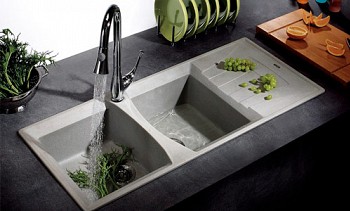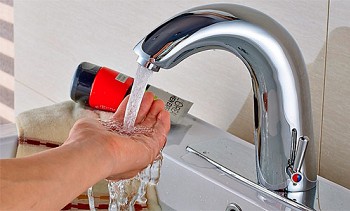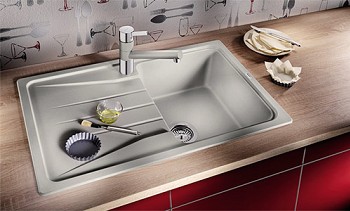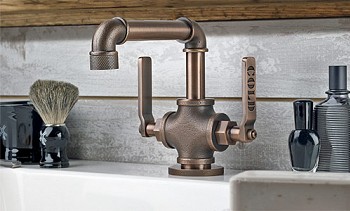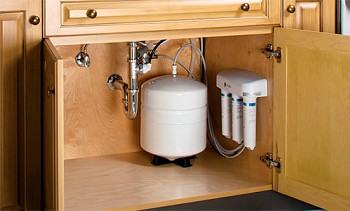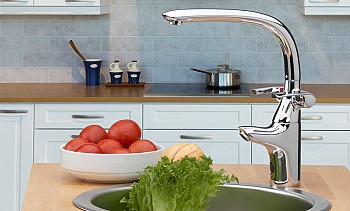Stone sinks came into fashion relatively recently - several decades ago. They are convenient, beautiful, relatively inexpensive and technologically advanced in installation and operation. But, at the same time, they conceal a number of shortcomings related to both objective and subjective characteristics. How practical is a stone sink for the kitchen, the pros and cons of which we will discuss below - the reader will decide. In the article we give only the facts.
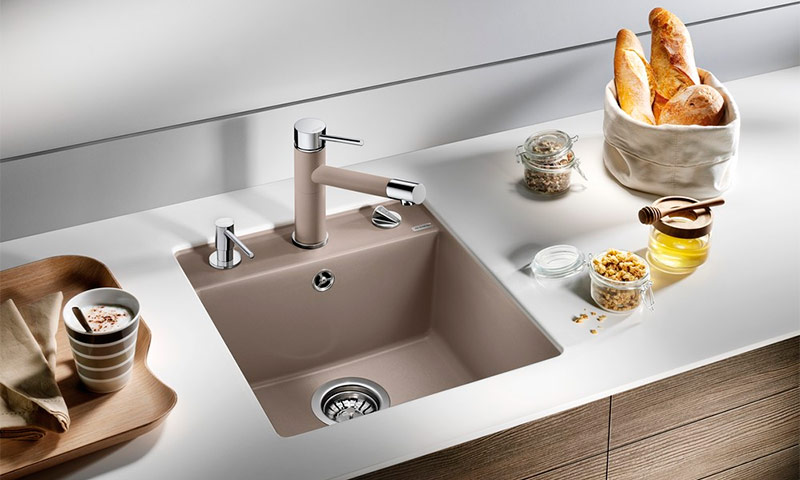
Content:
What materials can stone sinks be made of
The term "stone" refers to many natural and composite materials, the properties of which in one way or another resemble natural stone. Externally, sinks from different materials can be very different or almost identical - it all depends on the designer's intention and the manufacturer's capabilities.
The most common materials for the production of sinks are:
- porcelain tile;
- acrylic stone;
- agglomerate.
There are also sinks made of natural marble, granite and other types of waterproof natural stone. But they are expensive and relatively rare. First of all, consider the most popular designs.
Pros and cons of ceramic granite sinks for the kitchen
At its core, it is an artificial material made from natural components. It contains special types of clay, which is used for the production of ceramic tiles, silica sand of fine fractions, metal oxides. After mixing in a certain proportion, the resulting semi-liquid mass is pressed, thereby forming the desired product, burned at high temperatures - 1200 - 1400 0FROM.
The result is a sturdy product that does not differ in properties from granite. The whole charm of porcelain stoneware is that it can be given almost any shape. This opens up wide prospects for designers - from one material, you can make countertops, window sills, thresholds, and introduce it into the cladding in the form of decor or aprons.
Porcelain tile has a lot of useful properties. However, not everything is so perfect. There is also a mandatory "fly in the ointment" in a complete washing of honey. But most of the troubles with ceramic granite sinks can be avoided if properly operated.


+ The advantages of kitchen sinks made of porcelain stoneware
- Durability - service life up to 100 years.
- Practicality - the surface is difficult to scratch or split, it is perfectly washable and neutral to most household products, does not absorb grease and coloring substances.
- Wear resistance - even when cleaning with brushes and abrasive powders, the surface is difficult to damage.
- Resistance to mechanical loads - in order to break the sink, you must use at least a hammer, accidental impacts are not afraid of her.
- Heat resistance - the washing does not crack and does not deform from boiling water, volatile substances and odors are not released.

- Cons of porcelain stoneware sinks
- Price - in comparison with other types of sinks, porcelain tiles are significantly more expensive, but if you take into account the service life of 100 years, the price no longer seems so frightening.
- The possibility of mechanical damage during strong shock loads - surface chips and non-through cracks can occur, for example, when metal utensils fall from the height of the upper shelf of the cabinet. But the damage is easily repaired by a special mass and almost imperceptible.
We can say for sure - if you have a spacious kitchen, furnished with designer furniture and decorated in the same style, then you can always find a granite sink that is in harmony with the situation. This will be one of the best solutions.
Pros and cons of composite sinks for kitchen made of acrylic stone
Composite sinks made of acrylic stone are made of artificial material consisting of natural and synthetic components. Natural - granite or marble chips, quartz sand, basalt. Synthetic - acrylic resins acting as a binder. It is produced in the form of flat panels of a given thickness, from which a product of a given configuration is formed. If joints form between the walls and the bottom, then they are sealed with the same acrylic-mineral mixture and sanded.
In terms of strength, joints are not inferior to the main material and do not appear over time. You should not be afraid of leaks at the seams, even after deformation effects. But with all the attractiveness of composite sinks, they clearly have more minuses than porcelain stoneware.


+ Advantages of composite sinks for kitchen made of acrylic stone
- A variety of forms, component parts can be mounted in any straight or curved configuration;
- Zero toxicity, at any temperature, acrylic and mineral fillers do not emit toxic volatile and liquid substances. The material is chemically neutral to alkalis, acids and detergent components;
- High maintainability, any cracks, scratches and chips can easily be repaired with the help of special acrylic pastes, which are inexpensive and very technological in use;
- Light weight, the material is much lighter than porcelain stoneware or natural stone, which allows you to install them on fairly light frames.

- Cons of composite sinks for kitchen made of acrylic stone
- Low resistance to mechanical stress. Damaging the surface is quite simple when struck with a metal object, for example, inadvertently omitting a frying pan. Damage results in scratches or chips;
- Low heat resistance, you can not pour boiling water into the sink;
- Some types of acrylic absorb dyes, beet or berry juice, for example, it is necessary to rinse immediately, if it is absorbed, then washing the sink will be difficult. But when buying, pay attention to the presence of surface treatment, if it is, then this minus does not appear;
- Cost. With so many drawbacks, the price of washing is too high.
Buying an acrylic sink is not the worst option. With careful handling, it will last at least 50 years. If you have designer furniture in a modern style, then choosing any unusual acrylic sink will not be difficult.
Pros and cons of agglomerate kitchen sinks
A material consisting of a large amount of mineral chips, much larger than acrylic, and a certain amount of polymers connecting them into one monolithic mass. The main material used is marble, basalt, quartz, granite, or mixtures thereof. Binders - polymer resins, after hardening, form durable waterproof, chemically inert compounds. Pigments resistant to water, ultraviolet and chemical reagents give color to products. When touched, agglomerate sinks are indistinguishable from bowls made of natural stone - the same smoothness and pleasant coolness.
Agglomerate stone sink for the kitchen, the advantages and disadvantages of which are approximately the same as that of porcelain tiles in the number of products with great potential. Constantly emerging new types of binders make it possible to continuously improve product performance.


+ Plus sinks for the kitchen from agglomerate
- High strength and wear resistance, not lower than porcelain tile;
- Lack of need for polishing, damage or matting of the surface will not work even when using abrasives;
- Zero adhesion to fats;
- Lack of absorption of coloring substances, drops of juice, wine, coffee do not linger on the walls and bottom and are easily washed off with water;
- A variety of shapes and colors, you can always choose what is best suited to the interior and ergonomics.

- Cons sinks for kitchen from agglomerate
- The difficulty of restoring the integrity of the sink after damage. But it can be damaged only with great desire and diligence;
- Fewer design decisions than acrylic, but other parameters are much better;
- Quite high cost, more expensive than acrylic, cheaper than porcelain stoneware or natural stone.
When choosing a kitchen sink, it is necessary, first of all, to focus on functionality. According to the material, porcelain stoneware is best suited to the classical style, acrylic to eclecticism, modern and loft, and agglomerate to functional techno and modern. But the choice is yours. If judged broadly, then all types of stone sinks have the right to life and allow you to choose a product to your own taste.







